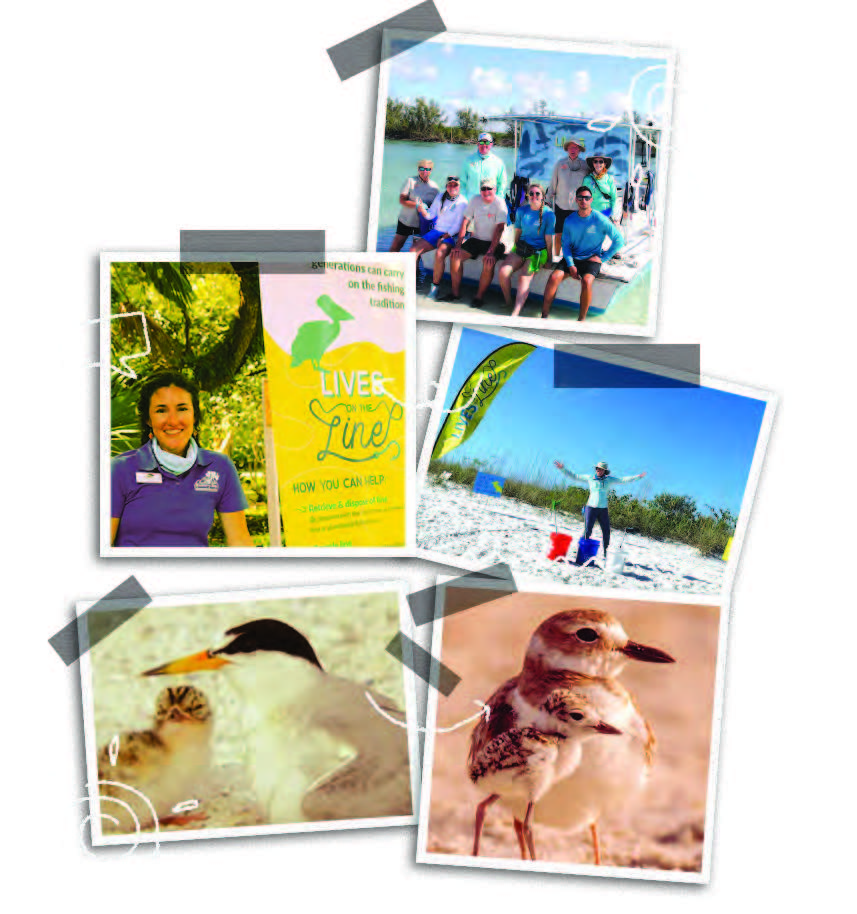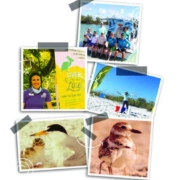TIPS to share the shore with nesting birds
 Follow Signage
Follow Signage
Avoid beaches that have signs warning of a bird colony or advises people to avoid the area during nesting season. Honor these closed areas and encourage others to do the same.
Keep Your Distance
When you see a large number of birds on the shore, stay at least 500 feet away. Minimizing disturbance to concentrations of birds is the key to conserving them.
Leash Dogs
When visiting the beach, never approach a bird colony with your dog. One loose dog can destroy a colony of beach nesting birds in minutes.
Do Not Force Flight
If you see birds on a beach, island or sandbar, walk or steer your boat around them. Avoiding disturbing them is the best approach. If parent birds fly away and leave their eggs or chicks, the babies will not survive in the Florida heat and sun, may be crushed or taken by predators.
Share the Shore with Beach Nesting Birds and Wildlife
Just like in other parts of the United States, springtime equals nesting time for the birds and wildlife of Rookery Bay Research Reserve in Naples. Made up of 110,000 acres of land and water, Rookery Bay’s beaches and small islands are the ideal natural space for some of Florida’s most endangered bird species to nest and raise their chicks.
Last month, Rookery Bay Research Reserve team members placed signage in the Reserve about beach bird nesting season and the closure of Second Chance Island Critical Wildlife Area in the Southern end of the Reserve. This island plays a huge role in the survival of endangered migratory beach nesting birds including Wilson’s Plovers, Terns and Black Skimmers. By closing the island to foot traffic and boat landings from March 1st to August 31st, the Reserve helps these birds, their fragile eggs and chicks to survive and thrive in the hot summer months.
Many who live and visit Southwest Florida are unaware that some shorebirds nest directly on the beaches, in the wide open. The eggs are extremely tiny and the chicks only as big as cotton balls, blending in with the sand and shells – perfectly camouflaged. The barrier islands and sandbars (including Second Chance Island) offer nesting birds and chicks an extra layer of protection from land predators including racoons, disturbance
from people and domestic animals (such as unleashed dogs).
Lives on the Line –
Rookery Bay Reaches People on the Beaches Most beaches in Southwest Florida remain open to beachgoers during shorebird nesting season. That’s why one of Rookery Bay’s missions is to get the word out to community members and visitors about sharing the shoreline with nesting birds and becoming more conscientious beachgoers and boaters.
For the last two years, Rookery Bay’s “Lives on the Line” outreach campaign has educated the community to never leave any garbage after a day on the water or at the beach, and always
follow signage regarding nesting birds and other wildlife like sea turtles. It is important to note that wildlife and birds often mistake trash and fishing line for food. They may get tangled in it or ingest it.
Rookery Bay volunteers and staff members hit the sand each weekend at Reserve hot spots such as Keewaydin Island, talking to beachgoers and boaters about sharing the shore with wildlife and taking their trash when they leave. Even the kids get involved by playing the “Lives on the Line” fishing game with staff and volunteers. It’s informative, fun and what’s learned can very well help protect the lives of animals and birds in Rookery Bay Research Reserve




Leave a Reply
Want to join the discussion?Feel free to contribute!